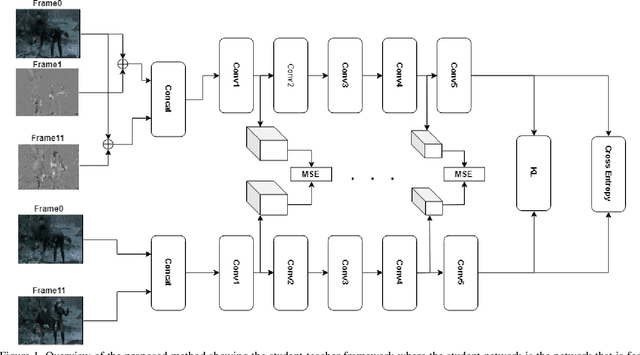Mimic The Raw Domain: Accelerating Action Recognition in the Compressed Domain
Paper and Code
Nov 20, 2019



Video understanding usually requires expensive computation that prohibits its deployment, yet videos contain significant spatiotemporal redundancy that can be exploited. In particular, operating directly on the motion vectors and residuals in the compressed video domain can significantly accelerate the compute, by not using the raw videos which demand colossal storage capacity. Existing methods approach this task as a multiple modalities problem. In this paper we are approaching the task in a completely different way; we are looking at the data from the compressed stream as a one unit clip and propose that the residual frames can replace the original RGB frames from the raw domain. Furthermore, we are using teacher-student method to aid the network in the compressed domain to mimic the teacher network in the raw domain. We show experiments on three leading datasets (HMDB51, UCF1, and Kinetics) that approach state-of-the-art accuracy on raw video data by using compressed data. Our model MFCD-Net outperforms prior methods in the compressed domain and more importantly, our model has 11X fewer parameters and 3X fewer Flops, dramatically improving the efficiency of video recognition inference. This approach enables applying neural networks exclusively in the compressed domain without compromising accuracy while accelerating performance.
 Add to Chrome
Add to Chrome Add to Firefox
Add to Firefox Add to Edge
Add to Edge